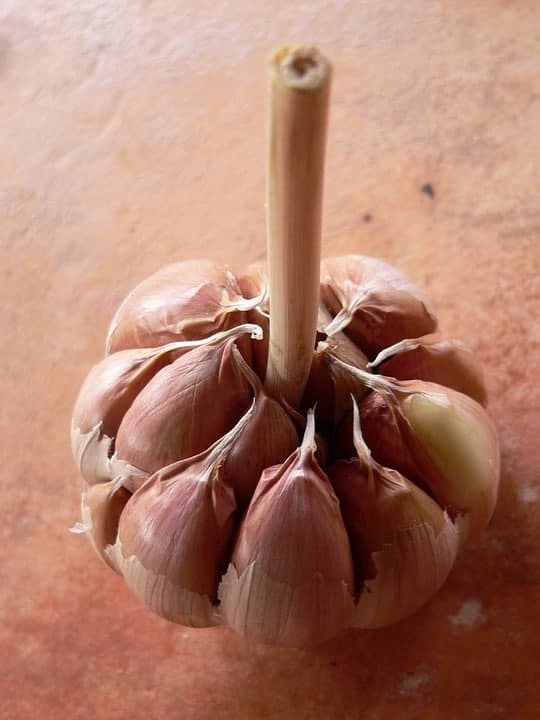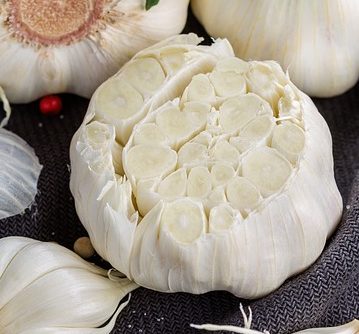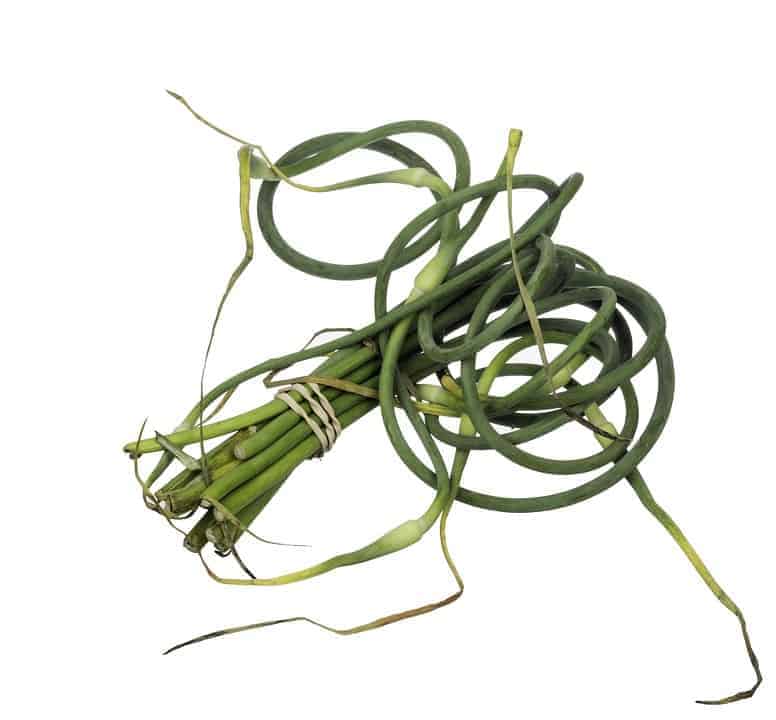It’s very hard to fail growing garlic, and most failures are either because they were planted at the wrong time or because the weather was just too extreme.
I always recommend planting garlic because it’s very easy to grow, fairly disease resistant, and you can grow a lot in a small space.
When to plant garlic depends on your location and type of garlic. Both softneck and hardneck garlic should ideally be planted in the fall, 3 to 6 weeks before your average first frost date. Softneck can also be planted in spring, as soon as the ground is workable (not frozen).
On this page:
Why Your Climate and Type of Garlic Matter
To find out whether to plant in the spring or the fall, and approximately when in the season to plant, you need to consider your local climate and the type of garlic you are planting.
There are two main types of garlic: softneck garlic and hardneck garlic. Tastewise, they are virtually the same, although some say hardneck garlic can have a stronger taste, but they grow quite differently.
Softneck Garlic vs. Hardneck Garlic
Softneck garlic is garlic which has a soft, flexible growing stalk (“neck”), and a tightly packed cluster of cloves in each bulb.
Because softneck garlic grows quite readily in places with mild winters, and tends to store longer without spoiling, it is the most common type of garlic you can find at the grocery store.
Softneck garlic is usually planted in the fall, but if you have a fairly long growing season, it can be planted in early spring.
Hardneck garlic has a rigid, woody stalk going right through the center of each bulb, and each clove is not as tightly packed as in softneck garlic.

In addition, hardneck garlic will produce a curly flower stalk in its first year, called a garlic scape. Most growers will cut off the scapes so the plants can put more energy into developing the bulbs. But don’t throw them away – garlic scapes are perfectly edible and incredibly delicious. They taste like garlic but are milder and somewhat sweet. I like to eat them raw but some people stirfry them or use them to make garlic pesto. Remove garlic scapes after they make their first curl, without cutting off any leaves, just the scapes.
Hardneck garlic needs cold winter temperatures to split cloves into new bulbs, so hardneck garlic should be planted only in the fall.
One other difference: Softneck garlic also has more tender leaves while hardneck garlic has tougher, more fibrous leaves, so softneck garlic is more ideal for growing garlic greens.
Which Type of Garlic Should I Grow?
In most states in the US and most countries in Europe, you can get away with planting either hardneck or softneck garlic. The farther north you are, the more likely hardneck garlic will perform better, as hardneck garlic is very cold hardy and needs cold winters to properly split cloves into new bulbs.
If you live in the very hot south, such as the south of Texas, Florida, or you live in the tropics, you will have the most success with softneck garlic.

If you’ve planted garlic in a place with warm (or non-existent) winters, and you noticed your bulbs are not forming properly, you can try tricking the garlic into thinking it’s overwintered by refrigerating cloves under 40°F (4°C), without freezing them, about 10-12 weeks before planting. You can read more here about how someone was able to grow garlic in the tropics successfully, and apply it to your hot climate.
In summary: If you live in a temperate climate with frosty winters, you can grow both softneck and hardneck garlic. If your winters are much colder, USDA Zone 5 or lower, then hardneck garlic may perform better. If you live somewhere where there isn’t any frost or cold winters, you may have more success with softneck garlic.
Best Time to Plant Garlic in the Fall
Whether you’re planting softneck or hardneck garlic, it’s best to plant them in the fall. In most places, you can start planting garlic in mid to late September, up to November.
To know when is the best time for your location, look up your average first fall frost date (you can look it up here or here) and plant around 3-6 weeks before then.
For example, my first frost is usually in late October, up to the first week of November. That means I should ideally be planting in late September.
If you end up not planting your garlic in time, don’t worry. Last year I planted garlic in early November and still was able to get every single planted clove to form a new, decent-sized bulb. However, my bulbs would have likely grown larger if I had planted at least a few weeks earlier.

Best Time to Plant Garlic in the Spring
If you missed your chance to plant garlic in the fall, it’s not too late! For a spring planting, you should plant garlic (preferably softneck garlic) as soon as the ground is workable (i.e. not frozen). It doesn’t matter if you are still at risk of getting frost, as garlic can handle those spring frosts without a problem.
How to Plant Garlic
Separate your cloves, but keep the papery skin on. When planting, the pointy part of the bulb should point up. Plant your cloves them 3 to 5 inches apart, and 1 to 2 inches deep. If you get extremely cold winters, you can add an inch or so of mulch, but it’s not necessary.
You will find that garlic is one of the easiest plants to grow in your garden, and if you save the biggest cloves from your harvest the following year to plant again, you will ensure you keep getting large, succulent bulbs. Even a modest garden can produce enough garlic for a small family indefinitely (unless you’re eating like a clove every day).
